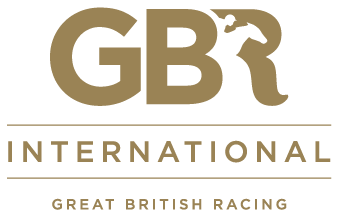History & Heritage
Britain is the spiritual home of horseracing as we know it across the world today.
A ROYAL PASSIOn
Horseracing has been part of our identity for hundreds of years.
Monarchs have been entwined in the sport throughout its rich history. King Charles I set breeding laws, standardised rules and embedded the sport’s importance in our national heritage.
King James I introduced the sport to the village of Newmarket in the early 1600s after stumbling across the open stretch of heathland whilst out hunting. Already a lover of equestrian pursuits, he recognised its potential and built the first grandstand on the heath. However, it was during the reign of Charles II that horseracing flourished and developed.
King Charles II commissioned a palace to be built in Newmarket, and from 1669 onwards moved his entire court, including all his ministers, twice a year for the racing season to what is today recognised as racing’s global headquarters. Newmarket became known as the ‘unofficial’ capital where affairs of state were conducted alongside racing, hawking and cock-fighting.
In 1711, Queen Anne made a similar discovery when riding on the heaths near Ascot. In the August, Her Majesty’s Plate, a race worth 100 guineas and open to any horse took place. We still commemorate her find today with the Group 1 Queen Anne Stakes, the opening race at Royal Ascot.
Queen Elizabeth II first rode a horse at the age of three and her interest in the equine world remained a constant throughout her life. Her love of racing never diminished, with her devotion as a passionate fan, owner, breeder and ambassador unwavering. She was a treasured figurehead and part of the sport's fabric since the mid-1940s until her death in September 2022.
The famous royal purple, scarlet and gold silks are now registered to HM The King and HM The Queen. King Charles III has a number of horses in training in joint-ownership with Queen Camilla. Only a few weeks after the Coronation, and as his mother did before him, the King conducted a private visit of the four Newmarket stables he supports, John and Thady Gosden, Sir Michael Stoute, William Haggas and Sir Mark Prescott.
A historic sport
In its oldest forms, the sport was enjoyed by Egyptians, Syrians and Ancient Greeks. The Romans brought the idea to British shores around 200 AD, and by the 10th Century the sport was gaining popularity, with historic accounts coming from the quills of the Anglo-Saxons.
The General Stud Book was first published in 1791 by James Weatherby, detailing the horses competing and their pedigree information. Every thoroughbred born today can be traced back to the sires from the era of Charles II and the Stuarts.
Further back, there are only three stallions responsible for the foundation of the entire breed: The Godolphin Arabian, The Byerley Turk, and The Darley Arabian. The last of the three shares DNA with 95% of all modern thoroughbreds, including the undefeated and world-famous Eclipse.
The Jockey Club
The Jockey Club was formed in Newmarket in 1750 and was made up of the elite in the horse racing world. It was in the Jockey Club Rooms that the original rules of the sport were written, and as a result The Jockey Club eventually became the sport’s appointed governing body.
Although The Jockey Club’s headquarters have now moved to London, the original Jockey Club Rooms still occupy a position of prominence on Newmarket’s High Street, as well as a very special place spiritually within global racing.
British racing in the modern day
Today, the sport is enjoyed by the masses and is the second biggest spectator sport in Great Britain.
Through the rise of the bookmakers, newspapers and televised events, racing has become an entertainment staple for all. Technology has also advanced, resulting in the introduction of photo finishes in 1947 and starting stalls in 1965.
Racing kept spirits up during the World Wars, has inspired healthy competition between neighbours over decades and continues to unite Britain as a nation of passionate sports enthusiasts who delight in the thrill of the race.
